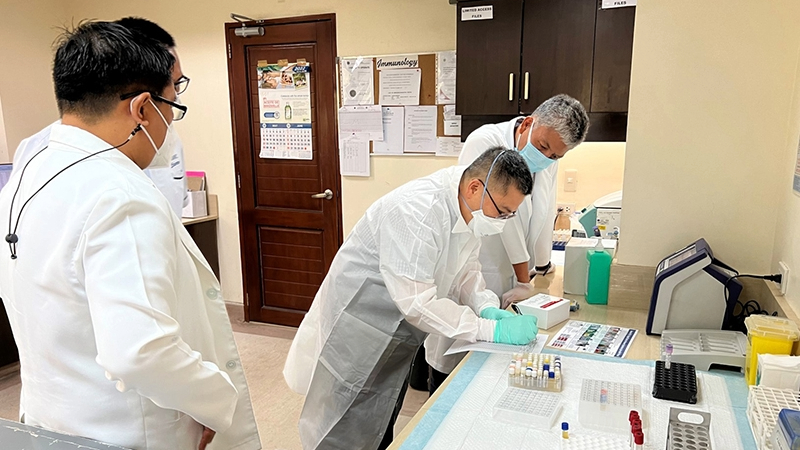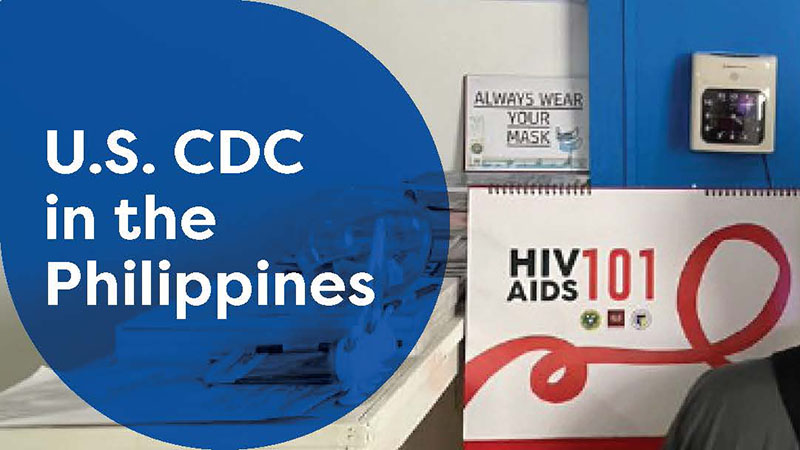At a glance
CDC works with the Philippines Department of Health (DOH) and other partners to build effective public health collaboration and partnerships, which strengthen the country's core public health capabilities: data and surveillance, laboratory capacity, workforce and institutions, prevention and response, innovation and research, and policy, communications, and diplomacy.

Overview

CDC established an office in the Philippines in 2022. CDC works closely with Goverment of Philippines and partners to detect, prevent and control infectious disease outbreaks, and build and strengthen the country's core public health capabilities. These include data and surveillance, laboratory capacity, workforce and institutions, prevention and response, innovation and research, and policy, communications, and diplomacy. CDC's work aims to protect the health of our nations and public health around the world.
Global health security

CDC provides expertise to strengthen health systems, prevent and detect health threats early, and quickly respond to outbreaks. CDC's global health security work in the Philippines focuses on building capacity across disease surveillance, laboratory systems, workforce development, and emergency management and response.
In alignment with DOH priorities, CDC partners with healthcare institutions to address infectious disease threats in healthcare facilities. This will help ensure that infectious disease threats are identified and contained through surveillance and infection prevention and control.
HIV and TB
As a key implementer of the U.S. President's Emergency Plan for AIDS Relief (PEPFAR), CDC plays an essential role in the fight against HIV and TB. With unmatched scientific and technical knowledge and long-standing relationships with ministries of health, CDC is uniquely positioned to advance HIV, TB, and other global health security activities that keep Americans safe at home and abroad.
Through PEPFAR, CDC provides critical support to Philippines's public health infrastructure, improving the country's ability to prevent, detect, and respond to HIV, TB, and other infectious diseases and minimizing their risk from entering the U.S.
Vaccine-preventable diseases
CDC leads the Stop Transmission of Polio (STOP) Program in collaboration with the World Health Organization and UNICEF. The STOP Program recruits and trains international public health consultants who support immunization activities. STOP consultants also respond to disease outbreaks and support of polio eradication. The program is currently participating in the development of the Measles Outbreak Strategic Plan.
Rubella vaccination coverage in the Philippines is less than optimal. The true burden of congenital rubella syndrome (CRS) is unknown due to a lack of surveillance. CDC is supporting a study to document the burden of CRS in the Philippines.
Influenza (flu)
CDC helps enable early detection and identification of emerging flu viruses and outbreaks of severe respiratory illness syndromes. CDC works with the Philippines to:
- Strengthen surveillance and laboratory capacities to prevent, detect, and respond to influenza threats.
- Strengthen connections between national institutions, especially National Influenza Centers.
- Maintain capacity to share specimens, clinical, and epidemiologic data on influenza circulation.
Non-communicable diseases
Cardiovascular diseases (CVDs), a group of heart and blood vessel disorders, are the leading cause of death worldwide. Early screening, detection, and treatment are critical to preventing the consequences of CVDs. Many low- and middle-income countries, including the Philippines, have limited laboratory capacity and infrastructure to address CVDs.
CDC is working with partners to strengthen capabilities in the Philippines to perform point-of-care lipid testing, especially in rural areas with no central laboratory. Point-of-care testing means that lipids (fatty acids that are key indicators of CVDs) can be tested wherever the patient is. This approach eliminates the need for transportation and storage of blood samples, increases access to testing, and improves health outcomes.
